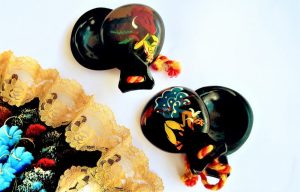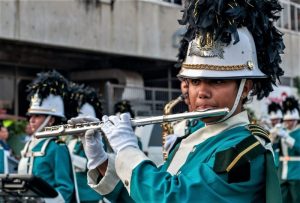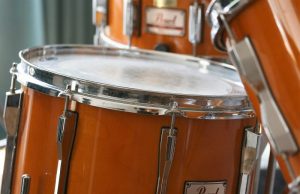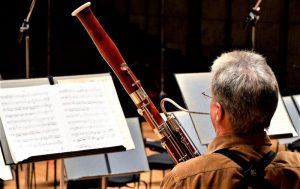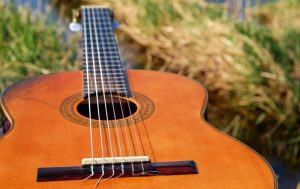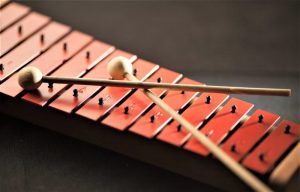Castanets
The castanets are a musical instrument that belongs to the family of percussion, is an instrument made of wood, which has been known since the time of the Phoenicians three thousand years ago. Spain has been the country that has best preserved the tradition and music of castanets, developing its use, transforming it into one of the most important national instruments like the Spanish guitar, classical or flamenco. The tones of the pairs of castanets are different, and the lowest is called male and the highest female. The acute castanet is placed in the right hand and the low one in the left hand.
What are castanets?
They are a musical instrument in the form of a shell that belongs to the percussion group and produce rhythmic patterns of sound to accompany the different movements of the dance.
Characteristics of castanets
The main characteristics of castanets are the following:
- They are made of two pieces of esparto wood that are shaped like a shell and that have been perforated with an ornamental rope, usually red in color.
- The main part is called concha and it is where the different resonances take place.
- Nowadays they are made of ivory, marble, glass and aluminium, but few of these are musically useful.
- The traditional material for making good castanets is very hard wood such as pomegranate, rosewood, ebony, pomegranate or oak.
- Most of those that are of professional quality are made of a laminated synthetic material such as Micarta.
- They are shaped like a clam shell that is circular or slightly oval, with an extension on one side for the hinge holes.
History
Its origin dates back to 1000 BC and was used by the Phoenicians, a culture that developed in the countries of the Mediterranean basin as Greece, Turkey, Italy, Spain. Other peoples, such as the Egyptians, used the crotale, which are a similar percussion instrument. Throughout history, Spain has been the country that has preserved and developed their use since then, making them part of Spain’s cultural heritage.
Who invented?
According to history, it is very probable that the Egyptians were the inventors of the castanets, although many believe that they were the Phoenicians, because they were the ones who were in charge of spreading the instrument in several regions and they are responsible for its implementation in Spain.
Types of castanets
When castanets are first learned, students usually use instruments made of plastic, which are very popular with children. Professional castanets are made of wood. There are castanets of different sizes, which are adapted to each type of hand. It is important to bear in mind that, in a pair of castanets, each one sounds different.
Parts
We can say that the parts of a castanet are:
- Concha or shell: it is the body itself of the castanets and it is the place where the percussion takes place.
- Lips: they are the edge of the shell that generates sound as it is beaten.
- Point: is an area located at the bottom in a vertical direction of the castanet.
- Besuña or ear: it is the place where the strings that are going to join the covers or shells of the castanets are placed.
- Heart: a concave area on the inside of the instrument.
What are they for?
They are currently used in the interpretation of flamenco and traditional Spanish dances and their folklore. In other places there are varieties of castanets and have different names, such as chácaras and false. They are used to produce a sound with rhythm and joy that becomes an art that involves the use of these small instruments.
How castanets are played?
To learn to play the castanets we must first know that each of them has a different sound, because one has a higher sound and the other has a lower. The one with the sharpest sound is placed in the right hand and the low one in the left hand. They should be placed in the thumbs of each hand, first the end that has the knot and then the other. They should be well adjusted to the thumbs, but without making too much force in the shell, otherwise the resonances would not sound.
The correct position turns with the fingertips facing each other and the palms towards the body. The one of the right hand is touched with the pinky and ring fingers, heart and forefinger. The one in the left hand is pressed with the middle, ring and pinky fingers at the same time. The rhythm starts with the right hand, cutting the last note with the sound of the left castanet.
Featured interpreters
Mainly in Spain, we find artists who specialize in the practice of castanets creating an art. Among them we can mention José de Udaeta who was an internationally known concert pianist from Barcelona, his disciple José Luis Landre and other outstanding artists such as Lucero Tena, Emma Maleras, Carmen de Vicente, Inma González, Consol Grau Melet, Montserrat Carles, Belén Cabanes, Teresa Laiz, Mar Bezana, Amparo de Triana, Gaby Herzog and Nina Corti.
How to cite this article?
Briceño V., Gabriela. (2019). Castanets. Recovered on 23 February, 2024, de Euston96: https://www.euston96.com/en/castanets/
